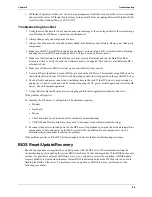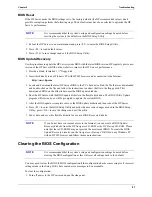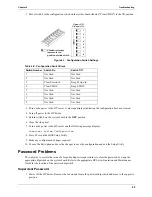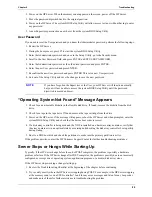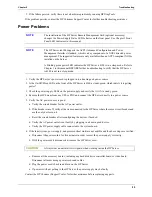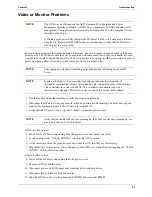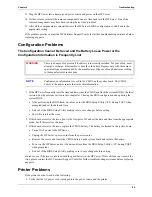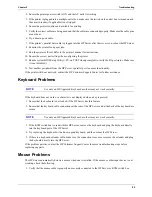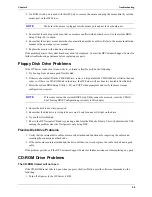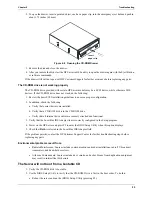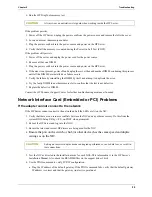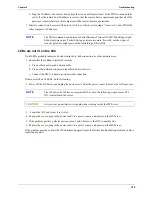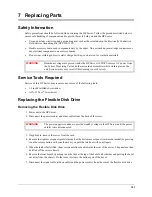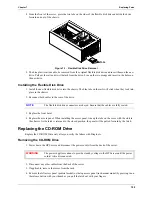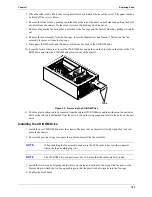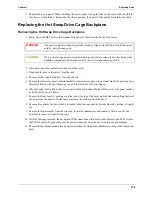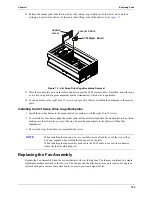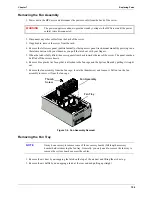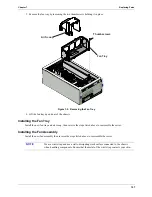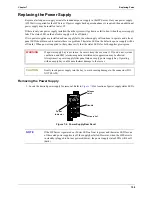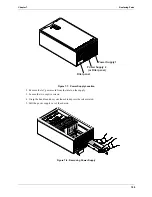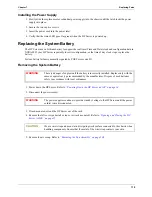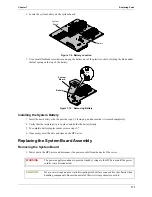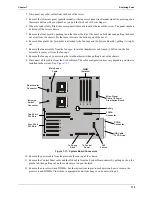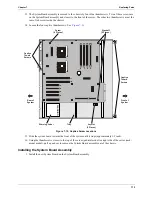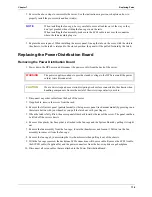
100
Chapter 6
Troubleshooting
b. Ping the IP address of a remote host (a host that is on a different subnet). If the PING command fails,
verify that the remote host IP address is correct, that the remote host is operational, and that all of the
gateways (routers) between this computer and the remote host are operational.
7. Directly connect two devices (with no hub, switch, or other device) using a “crossover” cable. PING the
other computer’s IP address.
LEDs are not lit on the NIC
No lit LEDs probably indicates a bad network cable, hub connection, or other network error.
1. Ensure that the cabling is installed correctly:
a. Try another known good network cable.
b. Try another network connection (another hub, switch, etc.)
c. Connect the NIC to a known good network connection.
If there are still no lit LEDs, do the following:
2. Power off the HP Server and unplug the power cord/s from the power source. Remove the left side cover.
3. . Locate the NIC and reseat it in its slot.
4. Replace the covers; plug in the power cord/s to a power source, and power on the HP Server.
5. If the problem persists, perform previous step 2 and 3 but move the NIC to another slot.
6. Replace the covers; plug in the power cord/s to a power source, and power on the HP Server.
If the problem persists, contact the HP Customer Support Center for further troubleshooting assistance before
replacing any parts.
NOTE
The PING command uses Internet Control Message Protocol (ICMP) Echo Request and
Echo Reply messages. Packet filtering policies on routers, firewalls, or other types of
security gateways might prevent the forwarding of this traffic.
NOTE
The HP Server tc3100 has an integrated NIC so skip the following steps unless a PCI
NIC is installed in the server.
CAUTION
Always wear an antistatic wrist guard when working inside the HP Server.

